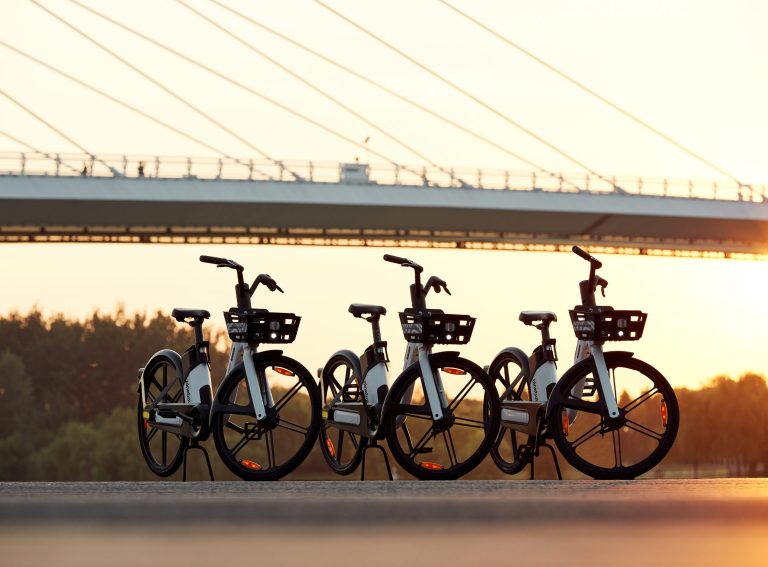Author: Matthew Pencharz, Head of Public Policy at Voi UKI and Benelux
Great Britain’s Highway Code is set to change on 29 January 2022, with eight new rules being introduced. While it could be perceived as nothing new, given that the Highway Code is updated several times a year anyway, this time there is a visible shift in the narrative away from motorised vehicle road users to active travel. The Highway Code refers to the Hierarchy of Road Users and, for these 2022 changes, the hierarchy is, for the first time, giving pedestrians and cyclists greater priority over cars.
The Highway Code adapts to the low carbon revolution
The Highway Code was first published in 1931 when there were 2.3 million motor vehicles on the road. It was only in the 1960s that car ownership became the norm, and the figure soared to 20 million by 1973. Today, according to the Department for Transport, there are over 27 million vehicles on British roads.
However, there is also a growing number of bikes, pedestrians and now e-scooters. This rapidly increasing demand for safe, sustainable travel is not only from individuals seeking to lower their personal carbon footprint, but also because of an urgent call by communities and local governments to address the climate crisis and hit net-zero targets.
At Voi, we have pledged to replace over one billion car journeys globally by 2030 and our UK data shows a 39 per cent modal shift, replacing an estimated 3.3 million short car rides since the beginning of the trials. By hitting this target of one billion car journeys being replaced, we will be contributing to a significant reduction in carbon emissions and congestion. This new tack taken by the Highway Code can only serve to support this vision.
If you’re bigger, you need to get better
The new Highway Code hierarchy finally highlights the fact that the road users who can do the greatest harm, in terms of their size and speed, have the greatest responsibility to reduce the danger they pose to others. Basically, if you’re bigger, you need to get better. Drivers of motorised vehicles will have to give priority to cyclists and pedestrians, particularly at junctions. The latter should not have to stop or swerve, simply to accommodate a turning car. Drivers should also leave at least 1.5 metres when overtaking cyclists at speeds of up to 30mph, and give them more space when overtaking at higher speeds. At Voi, we support that e-scooter riders should, of course, be given the same hierarchical respect by drivers.
At last, those who are giving guidance on road safety are observing modal shift and they are moving with the times. Albeit slowly, but definitely moving.
Witnessing the modal shift
The modal shift we are witnessing at Voi, as well as by fellow cycling and micromobility players, is finally being recognised as being potentially transformative in how people move around our towns and cities. Even though e-scooters are not mentioned in these new changes to the Highway Code, and they are still under trial in the UK after all, we can safely say that we are pleased to be players in this new prioritisation.
However, these new positive changes also serve to highlight our ongoing request to the UK government to create a new classification of vehicles to cover e-scooters, and we were pleased to hear the Transport Minister, Baroness Vere, state that the Government is considering this. This change should recognise, for example, the difference between scooters and electric-assist pedal cycles. This would give operators like Voi the freedom to innovate whilst still ensuring safe operations, and also give the Highway Code the go ahead to include this green form of transport in its hierarchy.
Councils must rise to the occasion
In the meantime, however, the reform of the hierarchy is a big step, confirming that our towns and cities are no longer to be dominated by motorised vehicles. As the Highway Code prioritises safe, sustainable and low carbon transport such as cycling and walking, government and local councils must rise to the occasion by developing safe infrastructure such as segregated cycle lanes, to encourage safe micromobility journeys and discourage private cars for short journeys.
Protecting pedestrians
As the Highway Code establishes guidance on drivers and riders having to give way to pedestrians crossing or waiting to cross the road, so must all other road users such as bike and e-scooter riders. At Voi, we shall continue to educate our riders online and in person to ensure they are informed and follow the rules of the road.
Safety and sustainability are in Voi’s DNA; we already prioritise the safety not only of our riders but also pedestrians and other road users. We strive to do everything we can to ensure that all road users are made safer through education, technology and our on-street operations. We also know that it is only by working together with our transport stakeholders, that we can support this narrative that cars are not the be all and end all, even electric ones, which is why we celebrate this significant milestone in the Highway Code’s own modal shift.











